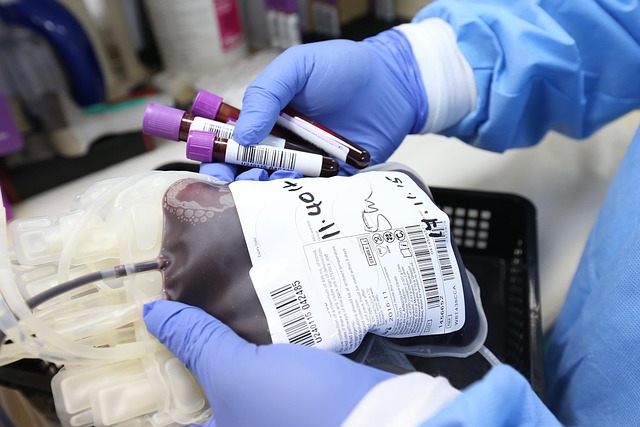Recognizing Hepatitis C Warning Signs: A Comprehensive Guide!
Hepatitis C is a serious liver infection caused by the hepatitis C virus. Recognizing the warning signs of hepatitis C is crucial for early detection and treatment. This article provides a detailed overview of the symptoms and signs to watch out for, along with valuable insights and information to raise awareness about this condition.

What is Hepatitis C and How Does It Develop?
Introduction to Hepatitis C begins with understanding that this bloodborne virus primarily attacks the liver, causing inflammation and potential scarring over time. The hepatitis C virus (HCV) spreads through contact with infected blood, most commonly through sharing needles, receiving contaminated blood transfusions before 1992, or through certain medical procedures in areas with poor infection control. Unlike hepatitis A and B, hepatitis C has no vaccine for prevention, making awareness and early detection even more critical.
The virus exists in six major genotypes, with genotype 1 being the most common in the United States. Once infected, approximately 75-85% of people develop chronic hepatitis C, while only 15-25% naturally clear the virus from their bodies. The chronic form can lead to serious complications including cirrhosis, liver failure, and hepatocellular carcinoma if left untreated.
Understanding Hepatitis C Warning Signs in Early Stages
Understanding Hepatitis C Warning Signs requires recognizing that many people experience no symptoms during the acute phase, which occurs within the first six months of infection. However, when early warning signs do appear, they often resemble flu-like symptoms that many people dismiss as minor illnesses. These initial indicators may include unexplained fatigue, low-grade fever, muscle aches, and general malaise.
The challenge with hepatitis C lies in its ability to remain “silent” for decades. Many individuals only discover their infection through routine blood tests or when applying for life insurance. This asymptomatic period allows the virus to cause progressive liver damage without the person’s knowledge, emphasizing the importance of screening for high-risk individuals.
What Are the Most Common Symptoms of Hepatitis C?
Symptoms of Hepatitis C vary significantly between individuals and disease stages. During the chronic phase, the most frequently reported symptoms include persistent fatigue that doesn’t improve with rest, abdominal pain particularly in the upper right area where the liver is located, and joint pain without apparent cause. Many patients also experience brain fog, difficulty concentrating, and mood changes including depression and irritability.
As liver damage progresses, more severe symptoms may develop. These include jaundice (yellowing of the skin and eyes), dark urine, pale-colored stools, easy bruising and bleeding, spider-like blood vessels on the skin, and fluid retention causing swelling in the legs and abdomen. Loss of appetite, unexplained weight loss, and nausea are also common indicators of advancing hepatitis C infection.
How is Hepatitis C Diagnosed and What Tests Are Used?
Diagnosis and Treatment of hepatitis C begins with proper testing, which involves multiple steps to confirm infection and assess liver damage. The initial screening uses an antibody test (anti-HCV) that detects antibodies produced in response to the virus. However, a positive antibody test doesn’t necessarily indicate active infection, as some people naturally clear the virus while retaining antibodies.
If antibodies are detected, healthcare providers order an HCV RNA test to determine if the virus is actively replicating in the body. This test also quantifies the viral load and identifies the specific genotype, information crucial for treatment planning. Additional tests may include liver function tests, imaging studies like ultrasound or FibroScan to assess liver damage, and sometimes liver biopsy in complex cases.
What Treatment Options Are Available in the United States?
In the United States, hepatitis C treatment has revolutionized dramatically over the past decade with the development of direct-acting antiviral (DAA) medications. These oral medications can cure hepatitis C in 95-99% of cases with treatment courses typically lasting 8-12 weeks. The most commonly prescribed DAAs include sofosbuvir/velpatasvir (Epclusa), glecaprevir/pibrentasvir (Mavyret), and sofosbuvir/ledipasvir (Harvoni).
Treatment selection depends on several factors including HCV genotype, presence of cirrhosis, previous treatment history, and potential drug interactions. The American Association for the Study of Liver Diseases (AASLD) regularly updates treatment guidelines to reflect the latest research and medication approvals. Most patients experience minimal side effects during treatment, with fatigue and headache being the most commonly reported issues.
What Are the Costs and Options for Hepatitis C Treatment?
| Treatment Medication | Average Cost (12-week course) | Insurance Coverage | Patient Assistance Programs |
|---|---|---|---|
| Epclusa (Gilead) | $74,000-$84,000 | Most major insurers | Gilead Advancing Access |
| Mavyret (AbbVie) | $65,000-$75,000 | Medicare, Medicaid, private | AbbVie Patient Assistance |
| Harvoni (Gilead) | $94,000-$108,000 | Widely covered | Support Path Program |
| Generic Options | $24,000-$36,000 | Increasing coverage | State programs available |
Prices, rates, or cost estimates mentioned in this article are based on the latest available information but may change over time. Independent research is advised before making financial decisions.
How Can Hepatitis C Be Prevented and What Should You Know About Awareness?
Prevention and Awareness strategies focus on avoiding exposure to infected blood since no vaccine exists for hepatitis C. Key prevention measures include never sharing needles, razors, or toothbrushes, ensuring proper sterilization practices in healthcare settings, and practicing safe sex particularly for individuals with multiple partners or those with HIV co-infection.
Healthcare providers recommend hepatitis C screening for all adults aged 18-79 at least once in their lifetime, and regular testing for high-risk individuals including people who inject drugs, received blood transfusions before 1992, are on hemodialysis, or have HIV infection. Early detection through screening programs has become increasingly important as many states have implemented initiatives to eliminate hepatitis C as a public health threat by 2030.
Understanding hepatitis C warning signs empowers individuals to seek timely medical attention and receive life-saving treatment. With modern antiviral therapies offering cure rates above 95%, recognizing symptoms early can prevent serious liver complications and improve long-term health outcomes. Regular screening for high-risk individuals and continued awareness efforts remain essential components in the fight against this preventable and treatable infection.
This article is for informational purposes only and should not be considered medical advice. Please consult a qualified healthcare professional for personalized guidance and treatment.




